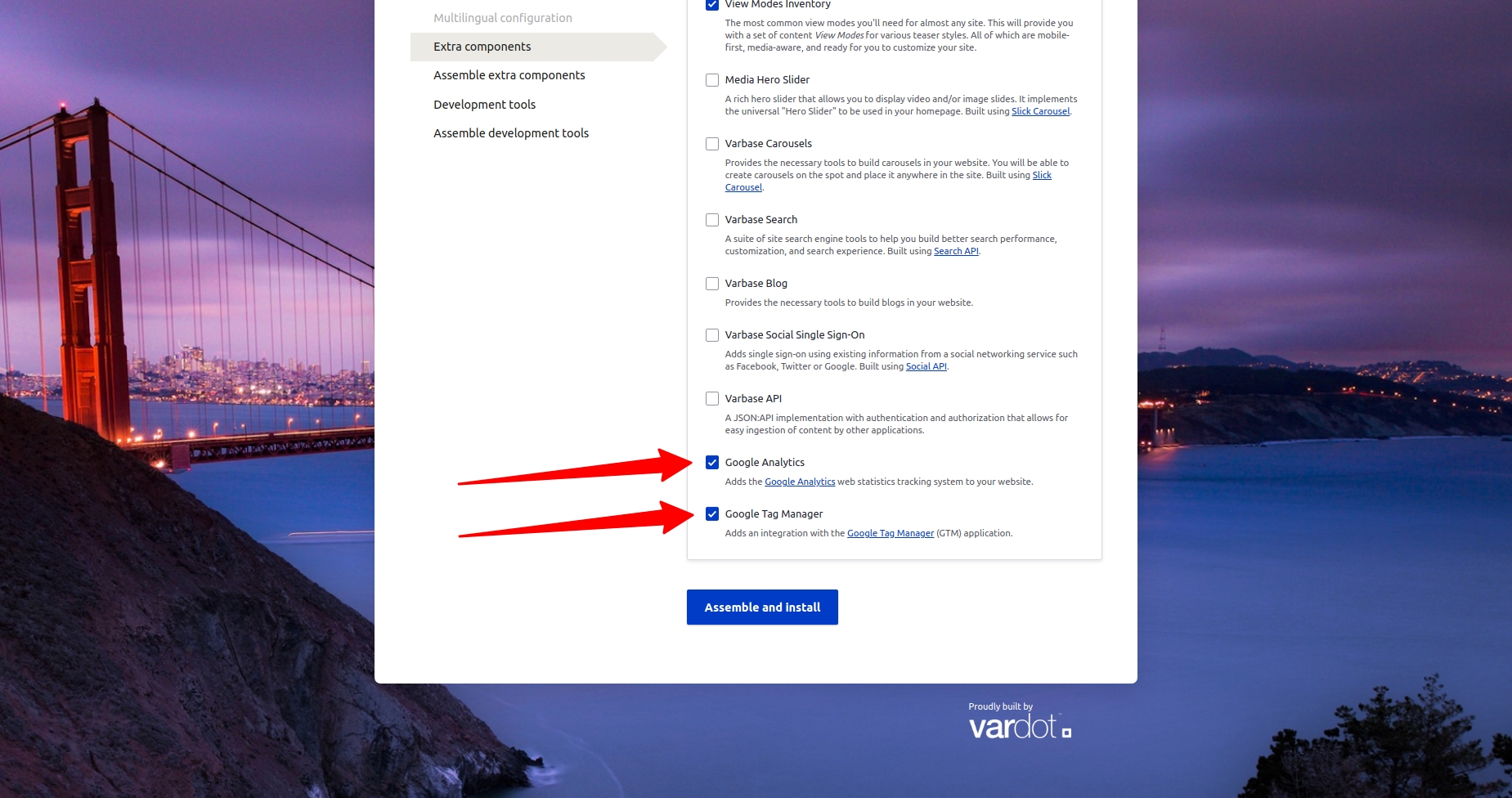Configuring SEO Features
Varbase bundles several SEO-related enhancements for top-notch search engine optimization.
Varbase SEO module assembles Search Engine Optimization (SEO) Core features and settings. such as Resource Description Framework (RDF), meta tags, automatically generated aliases, redirected old links to new links, Schema.org JSON-LD structured data definitions, and Real-time SEO page analysis.
Varbase SEOGoogle Analytics and Google Tag Manager
When you install Varbase, Google Analytics and/or Google Tag Manager modules can be optionally installed.

Google Analytics
The Google Analytics module adds the Google Analytics web statistics tracking system to your website.
The module allows you, by default, to add the following statistics features to your site:
Single/multi/cross domain tracking
Selectively track/exclude certain users, roles and pages
Monitor what type of links are tracked (downloads, outgoing and mailto)
Monitor what files are downloaded from your pages
Site Search support
AdSense support
Demographics and Interests support (formerly known as DoubleClick remarketing support)
Anonymize visitors IP address
DoNotTrack support (non-cached content only)
Drupal messages tracking
Modal dialog tracking (Colorbox)
Access denied (403) and Page not found (404) tracking
Cache the Google Analytics code on your local server for improved page loading times
Enhanced Link Attribution support
User ID tracking across devices
Changing URL fragments can be tracked as pageviews
Debug mode with analytics_debug.js
Custom integrations can also be provided to send custom events and dimensions via:
Custom dimensions and metrics support with tokens
Custom code snippets
Google Tag Manager
The Google Tag Manager module allows your site to integrate with Google Tag Manager (GTM) application, which allows you to deploy analytics and measurement tag configurations from a web-based user interface (hosted by Google) instead of requiring administrative access to your website.
To use the module, sign up for GTM and obtain a "container ID" for your website. For development purposes, create a GTM environment for your website.